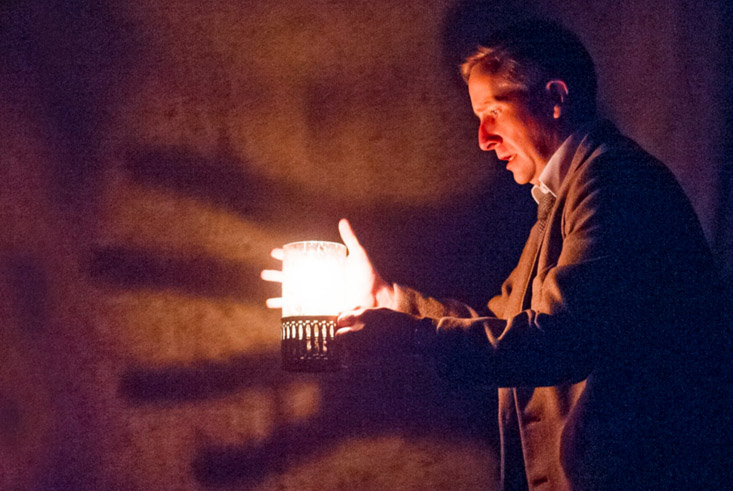
I usually utter a slight groan when I arrive at a theatre and discover that there are school parties in, especially teenagers with their continual texting, giggling and other annoying habits. Younger children are almost as bad with their fidgeting and talking. However, there are two occasions when a visit to the theatre is actually improved by an audience full of young people. One is the pantomime, of course, and the other is The Woman in Black. It is rare that you get such extreme audience reaction and let’s face it, it wouldn’t be much of a ghost story without a bit of screaming, would it.
This is the third or fourth time I have seen The Woman in Black and I have yet to tire of it. Why do I never tire of it and why is it so successful? The answer to that is simple. No, that’s why it is so successful – it’s simple. Two actors, a spectre, a handful of characters, a few bits of saggy curtains, an old theatrical skip, a bentwood chair, a clothes rail and a lot of dust – but those are not the important ingredients. The most important ingredient, and the one we supply ourselves, is imagination.
Thanks to Robin Herford’s inspired direction, some superb lighting and sound effects, everything is presented so simply that our imagination is unfettered and we are left to roam the treacherous marshes and the darkened corridors seeing only what we can see. Eel Marsh House is almost like Room 101, what we see there is what frightens us most. Only occasionally does a dramatic change in lighting, a swirling mist, the sound of a runaway horse and carriage, a distant cry or the glimpse of a shadowy figure induce a frightened gasp or in most cases, a scream.
The above lists all the components that make a good ghost story. The Woman in Black is nothing if not a ghost story and achieves a lot of its strength from that time-honoured device – a play within a play. An aging solicitor hires an actor to help him tell the story of the harrowing, life changing events from a job he had early in his career. The solicitor, Kipps, is charged to visit a remote house and sort out the estate of one of the firm’s clients who has just died. What he finds there is more than he bargained for and all I will say is that it does not have a happy ending. David Acton is excellent as the dour and deeply scarred Arthur Kipps and Matthew Spencer, as the actor, has the right amount of enthusiasm and encouragement to help guide Kipps through the difficult re-enactment of the events that nearly destroyed his life.
The Woman in Black is, as everyone knows, the second longest running play in the West End and it’s easy to see why. What would be interesting to know is how many of the hundred’s of thousands, if not millions, of people who have seen it have seen it more than once. A lot, I bet. Not only is the play kept fresh and new by being re-cast and directed by Robin Herford every six months but, because the imagery is not forced on you, you also bring something new to it yourself each time. It’s like Alan Bennett said in Beyond the Fringe all those years ago, life is rather like a tin of sardines, there’s always a bit left in the corner that you can’t quite get out.
There is always a bit left in the corner of The Woman in Black that you can’t quite see. But this corner is dark and spooky and you reach into it at your peril.
It doesn’t matter, who dunnit. The dénouement is not so important. It’s not the destination of The Woman In Black that’s important, it’s the getting there. ★★★★☆ Michael Hasted

